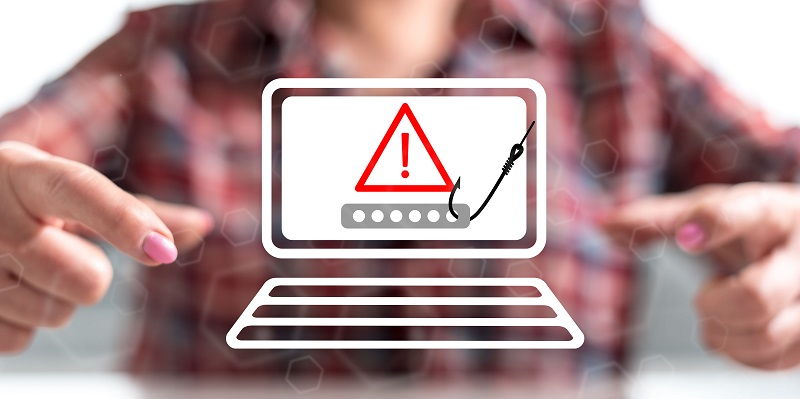Phishing emails have become one of the most prevalent and dangerous cybersecurity threats in recent years. As cybercriminals continue to evolve their tactics, organizations and individuals must stay vigilant to protect themselves. This article explores the limitations of AI detectors in identifying phishing emails, the length patterns observed in such emails, the increasing prevalence of obfuscation techniques in human-generated campaigns, and the importance of education in long-term resilience against phishing attacks.
Limitations of AI Detectors in Identifying Phishing Emails
AI detectors, while effective in many cases, fall short when it comes to differentiating between chatbot-written phishing emails and those created by humans. Startlingly, these detectors fail to distinguish between the two in 71.4% of cases. This poses a significant challenge as chatbot-generated emails are becoming increasingly sophisticated.
Length of Phishing Emails
Analysis reveals an intriguing pattern in the length of phishing emails. Almost half (44.9%) of these malicious emails do not meet the 250-character requirement, while an additional 26.5% fall below the 500-character mark. This finding suggests that cybercriminals are adapting their strategies, opting for shorter messages that potentially evade detection by traditional filters.
Rising Obfuscation Techniques in Human-Generated Phishing Campaigns
Human-generated phishing campaigns present a growing challenge as cybercriminals employ obfuscation techniques to evade detection. In fact, the integration of obfuscation techniques in phishing emails has increased by 24.4% since last year, with over half (55%) of such emails incorporating these methods. This underscores the need for more robust cybersecurity measures to combat these advanced techniques.
Deployment of Obfuscation Layers
A compelling insight emerges from the analysis of phishing threat actors’ techniques. Nearly half (47%) of these cybercriminals utilize two obfuscation layers, indicating a sophisticated approach to bypass email security measures. Only one-third (31%) rely on a single obfuscation technique, making it important for organizations to stay vigilant against the nuanced strategies employed by these threat actors.
One prevalent obfuscation technique employed by cybercriminals is HTML smuggling. This technique involves exploiting legitimate HTML5 and JavaScript features to encode and embed malicious code within HTML files or web pages. Its widespread usage highlights the challenging task of differentiating between genuine and malicious code, requiring further advancements in email security.
Graymail and its Impact on Phishing Detection
A concerning discovery by the cybersecurity company Egress is the prevalence of “graymail.” Graymail refers to bulk, but solicited emails that, although not malicious themselves, make the work of phishing detectors harder. Egress found that 34% of mail flow can be categorized as graymail, contributing to the complexity of spotting phishing attempts amidst a sea of legitimate but potentially risky emails.
Phishing emails that successfully evade Microsoft defenses have seen a significant increase of 25% in 2023 compared to the previous year. Despite Microsoft’s efforts, cybercriminals are finding novel ways to bypass their defenses, underscoring the adaptive nature of phishing campaigns and the need for stronger protective measures.
Evading Secure Email Gateways (SEGs)
Another concerning trend is the bypassing of secure email gateways (SEGs) by phishing emails. In the same time period, phishing emails that managed to infiltrate these gateways rose by 29%. This finding highlights the need for proactive measures beyond relying solely on SEGs for email security.
The Ineffectiveness of Legacy Approaches to Email Security
Legacy approaches to email security often heavily rely on quarantining, which, as this report suggests, is insufficient in preventing phishing emails from reaching users’ inboxes. The increasing sophistication of phishing campaigns demands a more proactive approach, combining advanced email filtering and employee education.
Promoting Long-Term Resilience through Education
As phishing attacks become more advanced, educating individuals on how to identify and combat these threats becomes crucial for long-term resilience. By teaching people to recognize the red flags of phishing, organizations can create a sustainable defense system against these evolving attacks. Establishing comprehensive cybersecurity awareness and teaching employees to be vigilant can significantly reduce the impact of phishing campaigns.
The threat of phishing emails continues to grow as cybercriminals adapt their techniques to evade detection. The limitations of AI detectors, the proliferation of obfuscation techniques, and the sophistication in bypassing email security measures require organizations and individuals to stay vigilant. To achieve long-term resilience against phishing attacks, a holistic approach that combines advanced filtering technology, continuous monitoring, and education plays a vital role in safeguarding sensitive information and thwarting cybercriminals’ sophisticated strategies.

